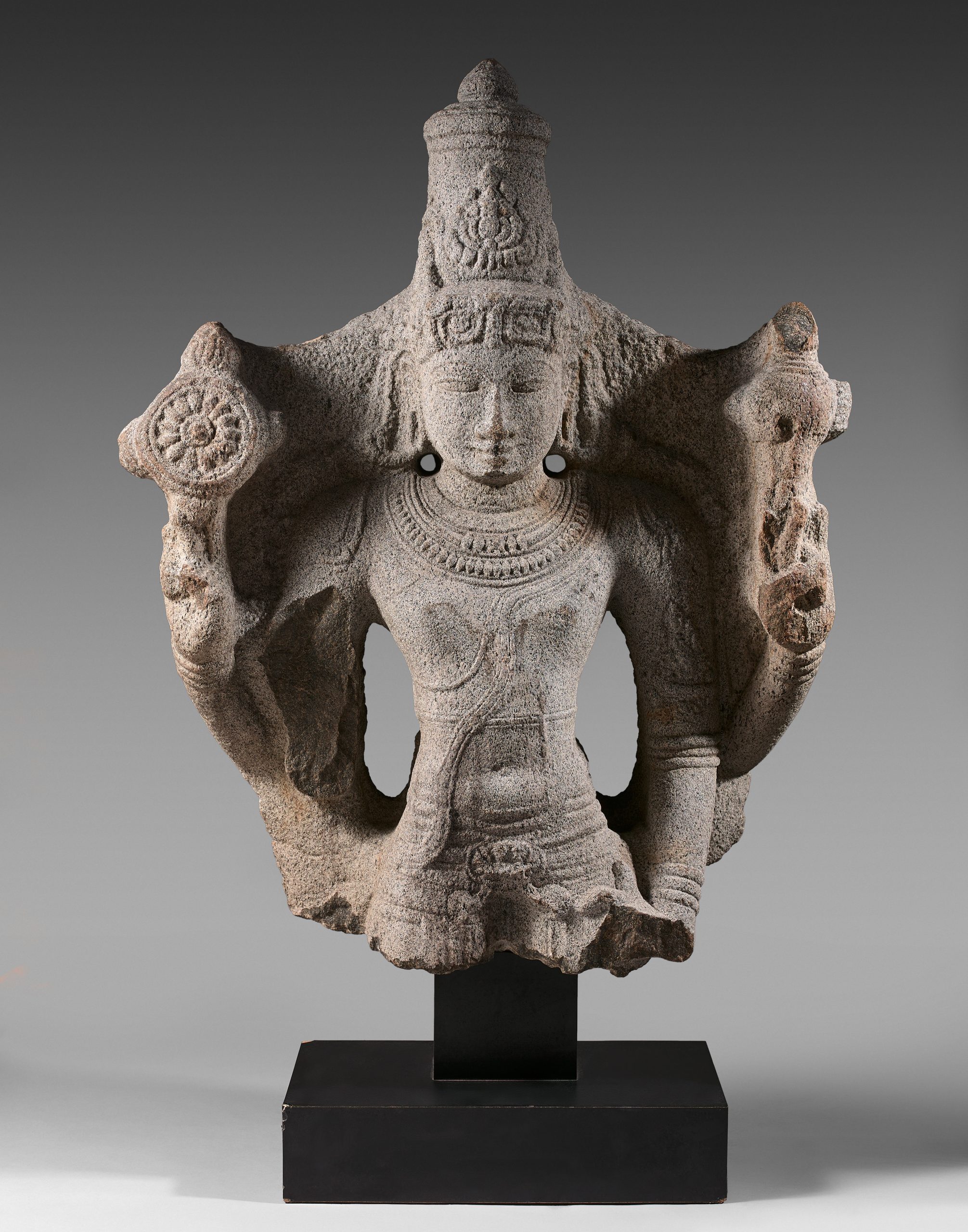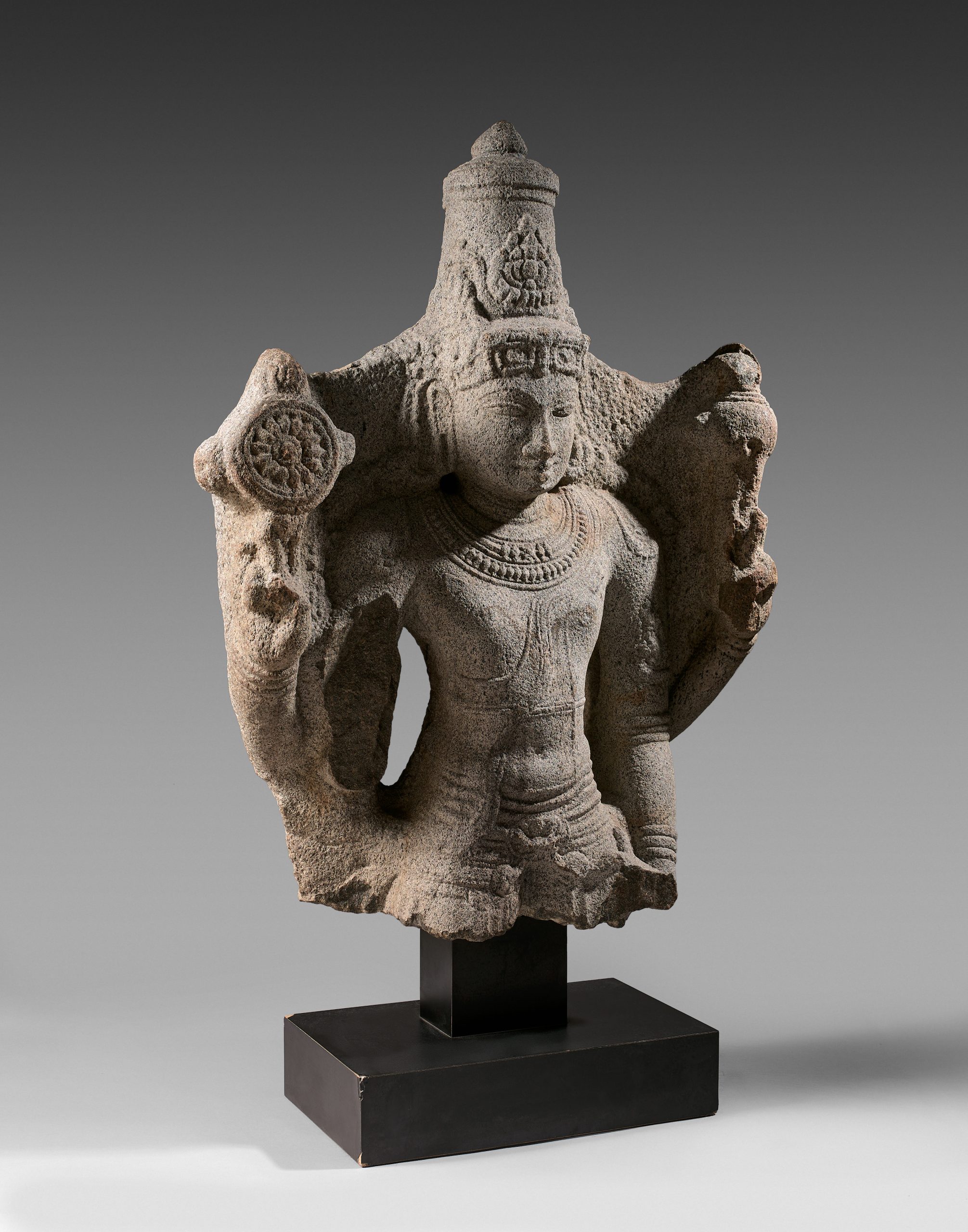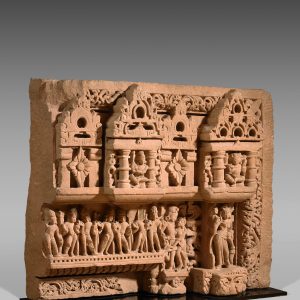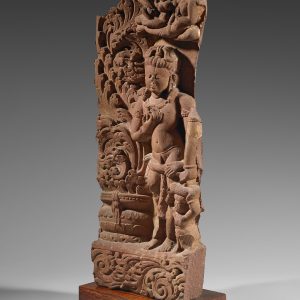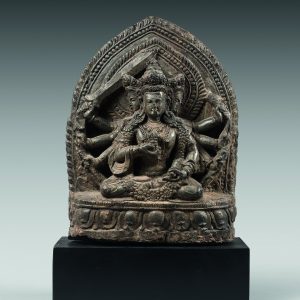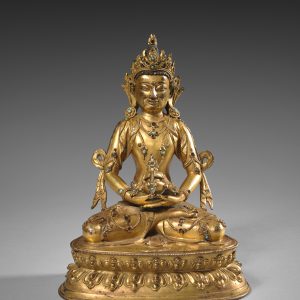Vishnu Torso
Granite
South India, Tamil-Nadu
12th-13th century, Cōla dynasty
H. 102 cm
Description
Carved in very high relief and of remarkable size, the god Viṣṇu can be recognised by his four arms, bearing his classical attributes. His upper hands hold the wheel (cakra) and the conch shell (śaṅkha). His lower hand rests on the gadā, his mace, which is missing here. The royal tiara (kirīṭa) crowns his head and is remarkably detailed, as are the various ornaments that underline the divine nature of the representation.
The modelling of the divinity’s body is deliberately naturalistic, with a tenderly sculpted belly and supple, rounded shoulders. The face has a restrained, slightly smiling expression that exudes power and serenity.
From the second half of the 9th century to the beginning of the 13th century, the builder sovereigns of the Cōla dynasty in southern India were renowned for their almost exclusive worship of the god Śiva. The masterful iconography and supple forms of Chola sculptures make them particularly aesthetic pieces, doubling as first-rate historical witnesses. This fluidly modelled representation is imbued with great gentleness, perfectly in keeping with the artistic demands of the period. While the most famous pieces are bronzes, stone statues are rarer and are closely linked to places of worship.
Provenance : Collection de la galerie Makler à Philadelphie jusqu’en juin 1965, puis acquise par John Bowden auprès de Sotheby’s New York le 19 mars 2008.

